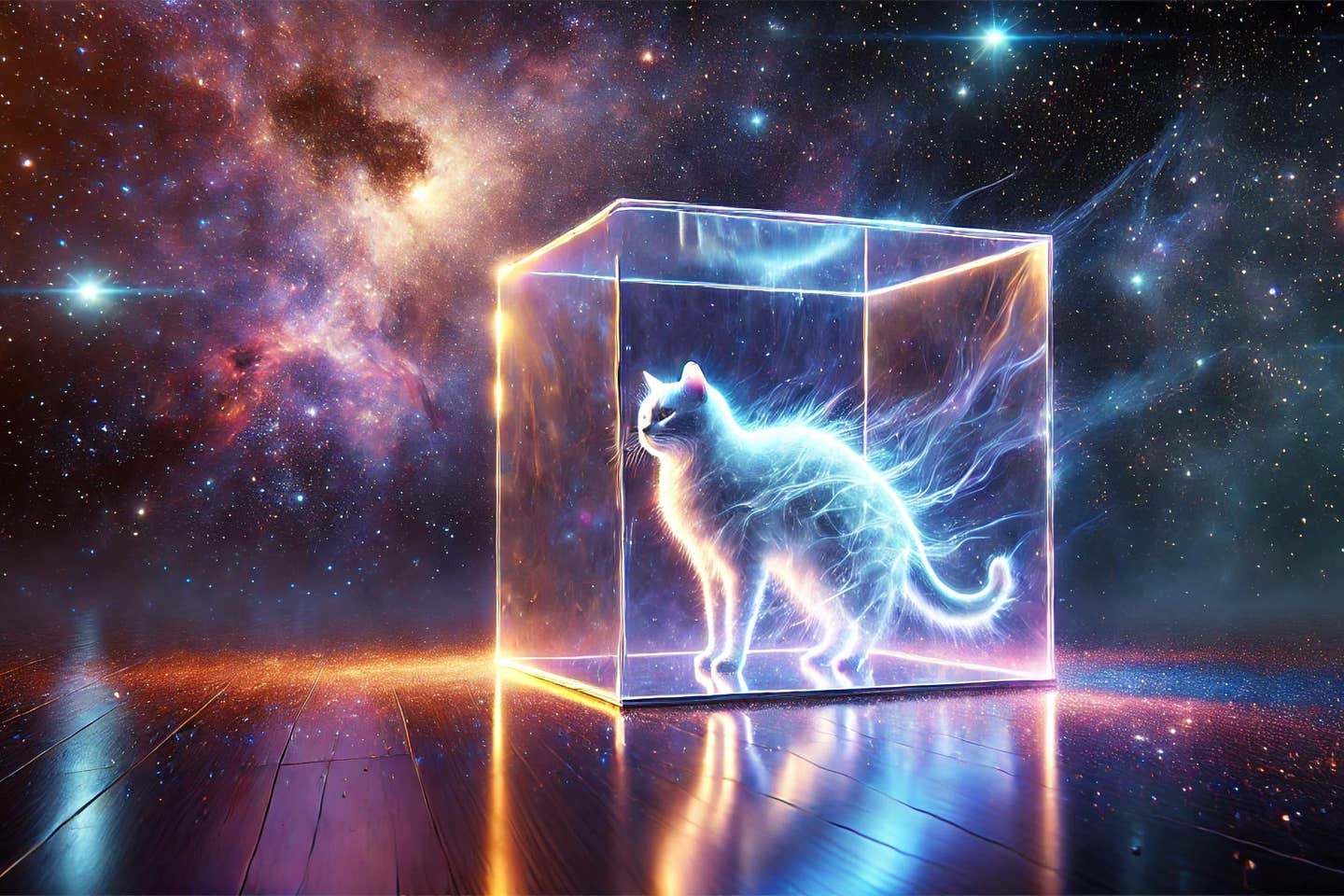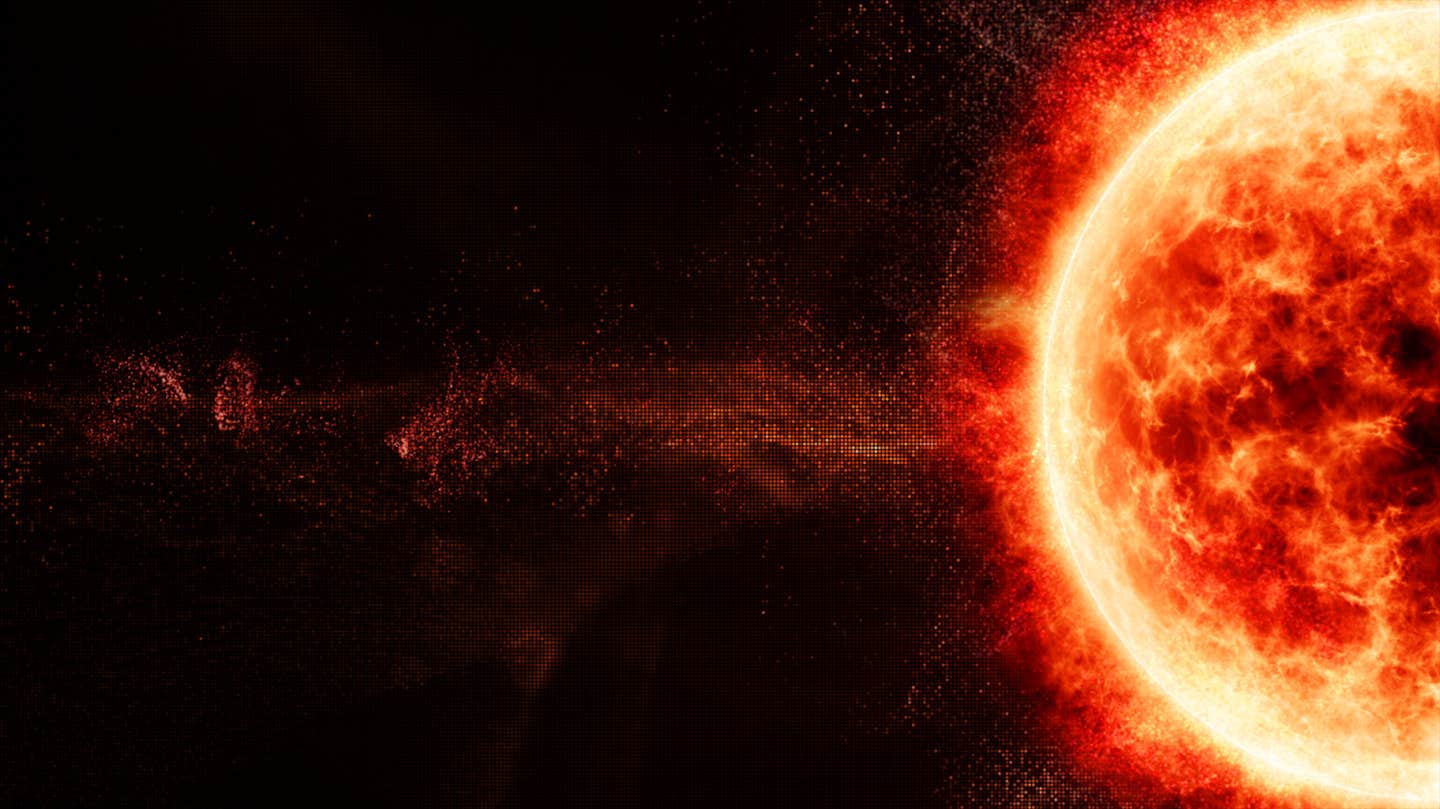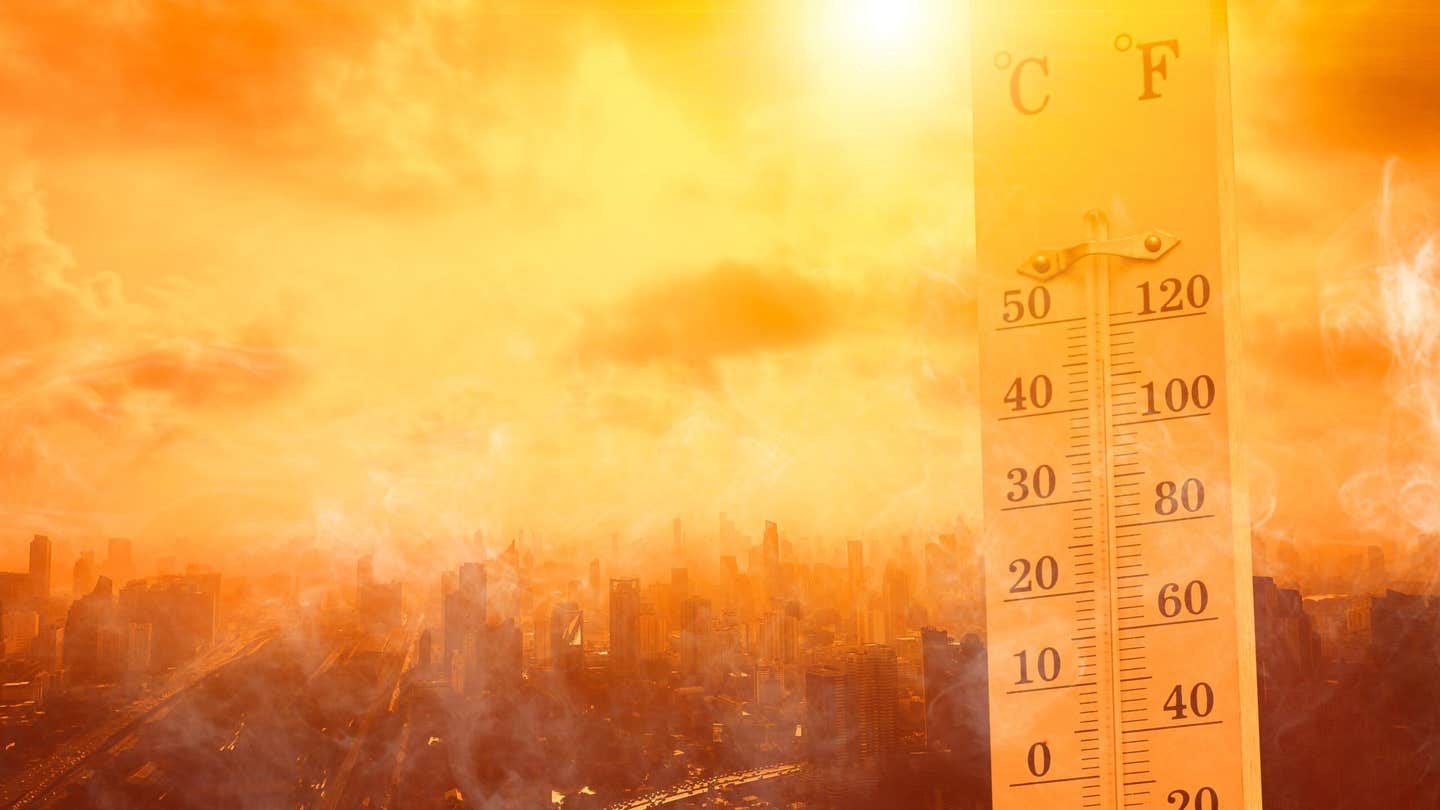New theory proposes the universe collapsed itself into reality, solving Schrödinger’s cat paradox
A new model suggests that the early universe collapsed itself from quantum chaos into the classical world we know today.

A new quantum theory proposes the universe collapsed itself into a classical state, solving Schrödinger’s cat paradox at cosmic scale. (CREDIT: Mradovicpr, Dreamstime)
In the strange world of quantum mechanics, objects can exist in several states at once. This concept, called superposition, is one of the most puzzling features of quantum theory. A particle, for example, can spin in multiple directions at the same time until someone measures it.
But outside of the lab, the everyday world doesn’t behave this way. Planets, stars, and even cats don’t appear in multiple states at once. The universe follows predictable rules, behaving classically according to Einstein’s theory of general relativity. So, what causes the shift from quantum oddities to the normal, classical behavior we see around us?
That question has haunted scientists for decades. A team led by Matteo Carlesso at the University of Trieste may have found a promising answer. Their recent study, published in the Journal of High Energy Physics, proposes a modified version of quantum mechanics that allows the universe to transition naturally from quantum weirdness to classical order.
Instead of needing an outside observer to collapse a system into a single state, their approach introduces self-induced collapse. In this model, systems interact with themselves and spontaneously settle into one outcome. This could explain how the entire universe, which has no external observer, ended up obeying classical rules.
Bridging the Quantum-Classical Divide
At the center of this mystery is something called the quantum measurement problem. Quantum mechanics says that particles remain in a superposition of states until a measurement forces them into a definite one. But the theory doesn’t clearly define what counts as a “measurer.” Physicist John Bell once asked, “What exactly qualifies some physical systems to play the role of measurer?”
This leads to strange thought experiments, like Schrödinger’s cat. In it, a cat inside a sealed box is both alive and dead until the box is opened. In theory, the cat’s fate stays undecided until someone looks. But cats don’t actually live in such bizarre states. So what breaks the superposition?
Carlesso and his team argue that the answer lies in how quantum systems scale. While atoms and small particles remain in superposition until measured, larger systems may collapse on their own. They revised the famous Schrödinger equation—the rulebook of quantum mechanics—to include extra terms. These new terms introduce randomness and self-interaction, causing spontaneous collapse of the wavefunction.
Related Stories
The larger the system, the more likely it is to collapse quickly. This explains why humans, planets, and the universe itself don’t appear in multiple states. “Such effects are stronger the larger the system,” Carlesso said. With this approach, the distinction between what measures and what gets measured disappears. Everything plays by the same rules.
A Quantum Beginning and a Classical Present
The team focused on the universe’s early moments, when space and time itself might have existed in many states. Back then, the universe may have been in a superposition of different space-time shapes. But today, the cosmos looks classical. Space follows smooth, continuous laws. The researchers believe that the collapse model helps explain this shift.
Carlesso’s group applied their theory to a simplified version of the universe, known as the Friedmann-Lemaître-Robertson-Walker (FLRW) model. This model assumes the universe is flat, even, and symmetric in every direction. It also aligns with what we observe in the Cosmic Microwave Background (CMB), the faint radiation left over from the Big Bang.
“Our model describes a quantum universe that eventually collapses, becoming effectively classical,” Carlesso explained. In this version, the universe doesn’t need an observer. It naturally shifts from a quantum mess to a classical structure. This transformation would have happened before the release of the CMB, which already shows classical properties.
Carlesso emphasized that the model doesn’t suggest new behavior after the CMB. Instead, it helps us understand what came before. The theory lays the groundwork for explaining how space-time settled into a classical state from an early quantum fog.
Solving Schrödinger’s Paradox
By introducing spontaneous collapse, the researchers bring a fresh solution to Schrödinger’s famous paradox. In traditional quantum mechanics, systems remain in multiple states until observed. In the revised model, every system—big or small—collapses on its own over time. There’s no need for an outside measurement.
“Any system localizes spontaneously in a particular state,” Carlesso said. “Instead of having a cat being dead and alive, one finds it dead or alive.” This same logic applies to the universe. Rather than being in a mix of different space-time geometries, the cosmos collapsed into one classical form.
This collapse process makes a clear prediction: larger systems collapse more often. Subatomic particles remain in superposition longer, but once they interact with larger systems, they quickly take on definite values. This could explain how classical properties emerge naturally, without needing to rewrite the laws of general relativity.
Testing a Bold New Theory
The idea of spontaneous collapse is elegant, but testing it is no easy task. The effects predicted by the model are incredibly small, especially in systems like atoms or molecules. Detecting these changes requires experiments with extreme sensitivity.
Carlesso and his team are now working with experimental physicists to test their ideas. These experiments aim to find small differences from regular quantum behavior. If the model is right, even tiny deviations could confirm it. If wrong, they’ll help set limits on how much quantum theory can be altered.
“Together with experimental collaborators, we are trying to test the effects of the collapse modifications or derive bounds on their parameters,” Carlesso said. “This is completely equivalent to testing the limits of quantum theory.”
While the model doesn’t predict new large-scale cosmic events, it gives scientists a powerful way to think about the universe’s early behavior. It may not answer all questions, but it provides a meaningful step toward joining the world of quantum theory with the classical one we observe.
As theories go, this one offers both a fix for a deep mystery and a path forward for future discoveries. If confirmed, it could finally explain how the classical world rises from quantum origins—and why, despite the strange rules of particles, cats remain either alive or dead, never both.
More about the Schrödinger Equation
The Schrödinger equation is a fundamental equation in quantum mechanics that describes how the quantum state of a physical system changes over time. It essentially provides a way to predict the behavior of particles at the atomic and subatomic level. It's analogous to Newton's laws of motion in classical mechanics, but for the quantum world.
What the equation describes:
Wavefunction: The Schrödinger equation uses a function called the wavefunction (usually denoted by the Greek letter ψ) to represent the quantum state of a system. This function contains all the information about the system, including its energy, momentum, and position.
Evolution of the system: The equation predicts how the wavefunction evolves (changes) over time, giving us insight into how the quantum system will behave.
Probabilistic nature: While the Schrödinger equation provides a deterministic way to describe the evolution of the wavefunction, the actual outcome of a measurement on a quantum system is probabilistic. The wavefunction squared gives the probability density of finding a particle in a particular location at a specific time.
Key components of the equation:
- Hamiltonian operator (H): Represents the total energy of the system (kinetic energy + potential energy).
- Time-dependent term: The term ∂/∂t (partial derivative with respect to time), which indicates how the wavefunction changes with time.
- Wavefunction (ψ): The function that describes the quantum state of the system.
Time-dependent vs. time-independent:
- Time-dependent Schrödinger equation: The general form that describes how the wavefunction evolves over time.
- Time-independent Schrödinger equation: A simplified version that applies when the potential energy of the system doesn't change with time. It's used to find the allowed energy levels (eigenvalues) of a quantum system.
In simpler terms:
Imagine throwing a ball. Classical mechanics can predict where the ball will be at any given time. The Schrödinger equation does a similar thing for quantum particles, but instead of predicting the exact position and momentum, it predicts the probability of finding the particle in a certain state.
Why it's important:
The Schrödinger equation is a cornerstone of quantum mechanics and has been incredibly successful in explaining and predicting the behavior of matter at the atomic and subatomic levels. It's used to understand the structure of atoms, the behavior of molecules, and the properties of materials.
Note: Materials provided above by The Brighter Side of News. Content may be edited for style and length.
Like these kind of feel good stories? Get The Brighter Side of News' newsletter.



